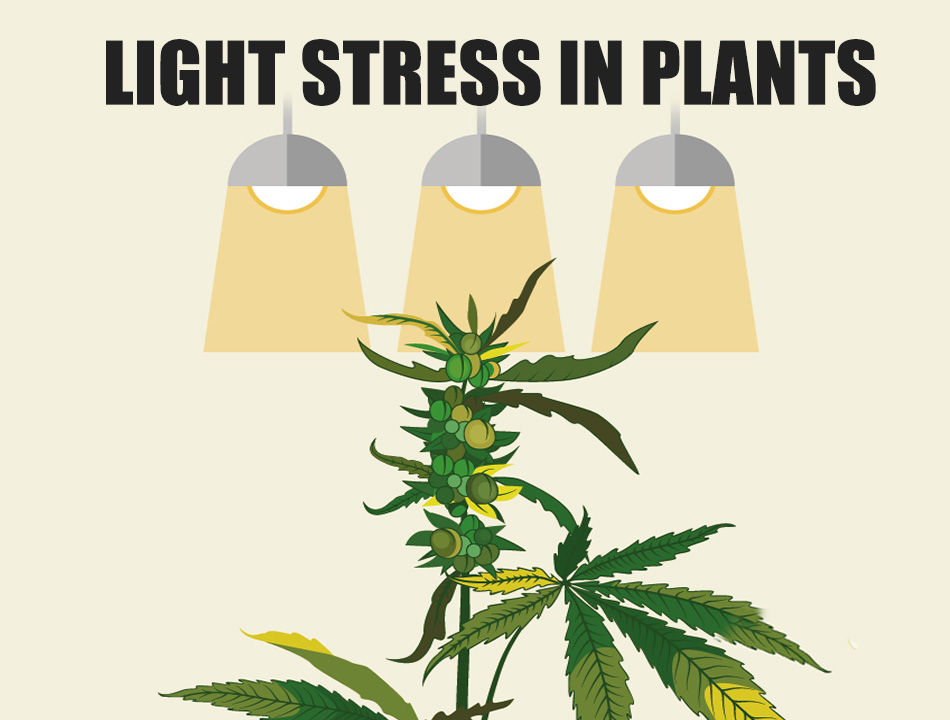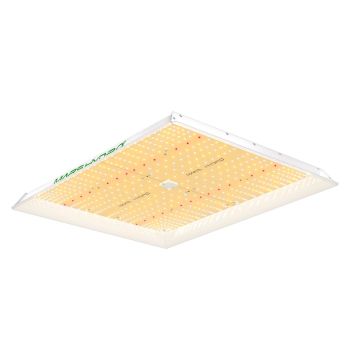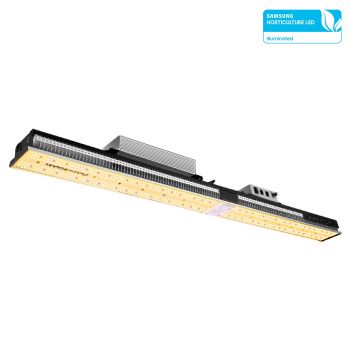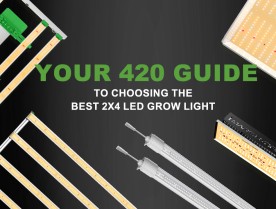
Plants are highly dependent on light for their growth and development, as it is essential for the process of photosynthesis. However, both too much and too little light can lead to light stress in plants, which can have detrimental effects on their growth and productivity.By understanding the mechanisms underlying plant responses to light stress, growers and farmers can develop strategies to optimize plant growth and increase crop yields.
What Is Light Stress In Plants?
Light stress in plants occurs when the balance between the energy absorbed by the plant and the energy utilized in metabolic processes is disrupted, leading to oxidative damage, photoinhibition, and reduced photosynthesis efficiency. There are two types of light stress in plants - high light stress and low light stress.
High light stress is a type of light stress in plants that occurs when the intensity of light exceeds the plant's capacity to utilize it for photosynthesis and other metabolic processes. This can cause damage to plant cells, including the accumulation of reactive oxygen species (ROS), which can damage cell membranes, proteins, and DNA. High light stress can also cause photoinhibition, which is the reduction of photosynthesis efficiency due to the inactivation of photosystem II (PSII) in chloroplasts. The severity of high light stress depends on the duration and intensity of light exposure, as well as other environmental factors such as temperature and humidity.
Low light stress is a type of light stress in plants that occurs when the intensity of light falls below the level required for optimal photosynthesis and growth. Under low light conditions, the amount of energy available for plant metabolism is limited, which can result in reduced photosynthesis rates and growth. In some cases, low light stress can cause a decrease in the levels of photosynthetic pigments, such as chlorophyll, which can further reduce the plant's ability to absorb and utilize light energy.
How Do I Know If My Plants Have Light Stress?
Light stress in plants can manifest in various ways, and there are several signs that can indicate if your plants are experiencing light stress.

-
Yellowing or bleaching of leaves: One of the most common symptoms of light stress is the yellowing or bleaching of leaves, particularly in older leaves. This occurs due to the breakdown of chlorophyll, the pigment responsible for absorbing light energy for photosynthesis.
-
Stunted growth: Plants experiencing light stress may also exhibit stunted growth or slow development, as reduced photosynthesis rates can limit the production of the energy required for growth and metabolism.
-
Reduced yield: If your plants are crops, light stress can also reduce yield by limiting the amount of energy available for the production of fruits or seeds.
-
Leaf drop: In severe cases, plants may shed leaves or other plant parts as a stress response, which can further reduce growth and productivity.
-
Changes in leaf color or shape: Depending on the species, plants may respond to light stress by changing leaf color or shape, such as curling or cupping leaves.
-
Reduced plant vigor: Light stress can also lead to reduced plant vigor, as the plant is not able to produce enough energy for its metabolic processes, including defense against pests and diseases.
-
Changes in leaf position: Plants may change the orientation of their leaves to avoid excessive light exposure. For example, some plants may turn their leaves away from the sun to reduce the amount of light they receive.
-
Leaf scorching: When plants are exposed to high-intensity light, particularly during hot and dry weather, the leaves may become scorched or burnt. This can cause brown or black spots on the leaves, and the leaves may eventually die.
-
Delayed flowering: For plants that rely on photoperiodism to flower, light stress can disrupt the plant's internal clock and delay or prevent flowering.
If you notice any of these symptoms in your plants, it may be an indication that they are experiencing light stress. However, these symptoms can also be caused by other factors, such as nutrient deficiencies or disease, so it is important to carefully consider all possible causes of the symptoms before taking any action.
How To Confirm The Presence Of Light Stress After Noticing The Signs?
To confirm whether light stress is the cause of the symptoms, you can perform a simple light stress test. This involves exposing a small portion of the plant to higher light intensity than normal for a short period, typically a few hours, and then observing the plant's response. If the exposed area of the plant shows signs of stress, such as leaf bleaching or curling, it may be an indication that the plant is experiencing light stress.
Plant Mechanism Against Light Stress In Plants

Defense Against High Light Stress
Can too much light kill a plant? Yes. Therefore, plants have several mechanisms to defend against high light stress, which can help them to maintain their physiological functions and survive under challenging conditions.
One of the most important mechanisms is photoprotection, which involves the dissipation of excess energy as heat, thereby reducing the formation of harmful reactive oxygen species (ROS). Plants can achieve this by increasing the production of carotenoids, such as zeaxanthin and lutein, which can act as photoprotective pigments in the chloroplasts.
Plants also produce antioxidant enzymes, such as superoxide dismutase (SOD), catalase, and peroxidase, which can help to neutralize ROS and protect against oxidative stress. In addition, plants can upregulate the expression of genes involved in stress responses, including heat shock proteins, which can help to repair damaged proteins and membranes.
Another mechanism that plants use to defend against high light stress is the regulation of photosynthesis. Plants can downregulate the expression of genes involved in the light-dependent reactions of photosynthesis, such as those encoding the photosystem II (PSII) reaction center, in response to high light stress. This helps to prevent the accumulation of excess energy and ROS, and can reduce the risk of photodamage.
Finally, plants can also adjust their growth and development in response to high light stress. For example, they may produce smaller and thicker leaves, which can reduce light penetration and increase light absorption efficiency. They may also allocate more resources to root growth, which can help to improve water and nutrient uptake. You can also tell by this (size of leaves vs. normal size) if your plant is under stress.
Defense Against Low Light Stress
Plants also have several mechanisms to defend against low light stress, which can help them to maintain their physiological functions and survive under conditions of reduced light intensity.
One of the primary mechanisms is the regulation of photosynthesis. Plants can increase the expression of genes involved in the light-dependent reactions of photosynthesis, such as those encoding the photosystem I (PSI) reaction center, in response to low light stress. This can help to increase the efficiency of energy capture and utilization, and can improve the rate of carbon fixation.
Plants can also adjust their growth and development in response to low light stress. They may produce larger and thinner leaves, which can increase light interception and maximize light absorption efficiency. They may also allocate more resources to shoot growth, which can help to increase the surface area available for light capture. The same as before, you can tell if your plants are under low light stress by their leaves' sizes.
In addition, plants can produce specialized pigments, such as anthocyanins and flavonoids, which can act as light-absorbing molecules and protect against oxidative stress. These pigments can help to enhance the efficiency of light capture and utilization, and can also serve as antioxidants to protect against damage from excess ROS.
Finally, plants can also adjust their metabolism in response to low light stress. They may increase the production of storage compounds, such as starch and lipids, which can help to store excess energy and support growth and development when light levels are low.
How To Prevent Light Stress?
Preventing stress is always easier than trying to manage its effects after the fact, so take the time to provide your plants with the best possible growing conditions. We listed several bullet points in the following to take care with when growing indoor plants.

-
Provide optimal light intensity: Can LED lights burn plants? Yes, they do when you offer the wrong intensity of light for your plants, although LEDs are cool enough to run. To learn the right amount and intensity of light for your plants, please refer toHow Much PPFD For Indoor Plants In Each Growth Stage.
-
Control light duration: Make sure to provide the appropriate amount of light and dark periods for your plants.
-
Monitor temperature: High temperatures can increase the risk of photodamage, while low temperatures can exacerbate low light stress.
-
Provide proper nutrition: Plants need appropriate nutrition to maintain their physiological functions and defend against stress.
-
Avoid overwatering: Overwatering can lead to waterlogging and reduced oxygen availability in the soil, which can exacerbate the effects of light stress.
-
Provide proper ventilation: Proper ventilation is important for maintaining optimal temperature and humidity levels, as well as for reducing the risk of disease and pest infestations.
-
Gradually acclimate plants to high light intensity: If you are moving plants from a low light environment to a high light environment, it is important to acclimate them gradually to prevent photodamage. Start by providing the plants with a lower light intensity and gradually increase the light intensity over time.
How To Fix Light Stress In Plants
Fixing light stress in plants requires identifying the specific cause of the stress and implementing appropriate corrective measures. Here are some tips on how to fix high light stress and low light stress in plants:

Fixing High Light Stress:
-
Move the plant to a shadier location: If the plant is receiving too much light, move it to a location with lower light intensity, or provide shading materials such as shade cloth or curtains.
-
Reduce light intensity: If the plant is receiving too much light from artificial sources, you can reduce the light intensity by raising the hanging height of the light fixture, dimming down the light, or changing to a lower wattage bulb.
-
Increase humidity: High light intensity can increase evaporation and dry out the plant, so increasing the humidity around the plant can help to reduce the stress. You can use a humidifier or place a tray of water near the plant to increase humidity.
-
Prune damaged leaves: If the plant is showing signs of photodamage, prune the damaged leaves to prevent further damage and allow the plant to redirect its energy towards healthy growth.
Fixing Low Light Stress:
-
Move the plant to a brighter location: If the plant growing outdoors is not receiving enough light, move it to a location with more natural light, or provide artificial lighting to supplement the natural light. If the plant growing indoors is not receiving enough light, hang the lighting fixture closer or dim up the lighting.
-
Adjust light duration: If the plant is not receiving enough light duration, adjust the light schedule to provide more light during the day or extend the light period using artificial lighting. But we do not recommend using this way to fix lighting stress because plants have their own rhythm and if you change it other problems will arise.
-
Fertilize: If the plant is experiencing low light stress due to nutrient deficiency, fertilize the plant with a balanced fertilizer to provide essential nutrients for growth.
-
Prune to improve air circulation: If the plant is growing leggy and stretched out due to low light, prune the plant to promote bushier growth and improve air circulation around the plant.
Remember to gradually acclimate plants to any changes in light conditions to prevent additional stress. In some cases, it may take time for the plant to recover from light stress, so be patient and continue to provide appropriate growing conditions to promote recovery.
In Conclusion

In conclusion, light stress is a significant issue that can affect the growth, development, and overall health of plants. High light stress and low light stress can have detrimental effects on plant tissues, which can lead to reduced growth, productivity, and even death. However, with proper care and attention, it is possible to prevent and mitigate the effects of light stress in plants. By providing appropriate light intensity and duration, and taking steps to reduce stress factors such as temperature, humidity, and nutrient availability, you can help your plants to thrive and achieve their full potential. Regular monitoring, timely interventions, and a proactive approach to plant care can go a long way towards preventing and addressing light stress in your plants, and ensuring that they continue to flourish and provide beauty and benefits for years to come.











